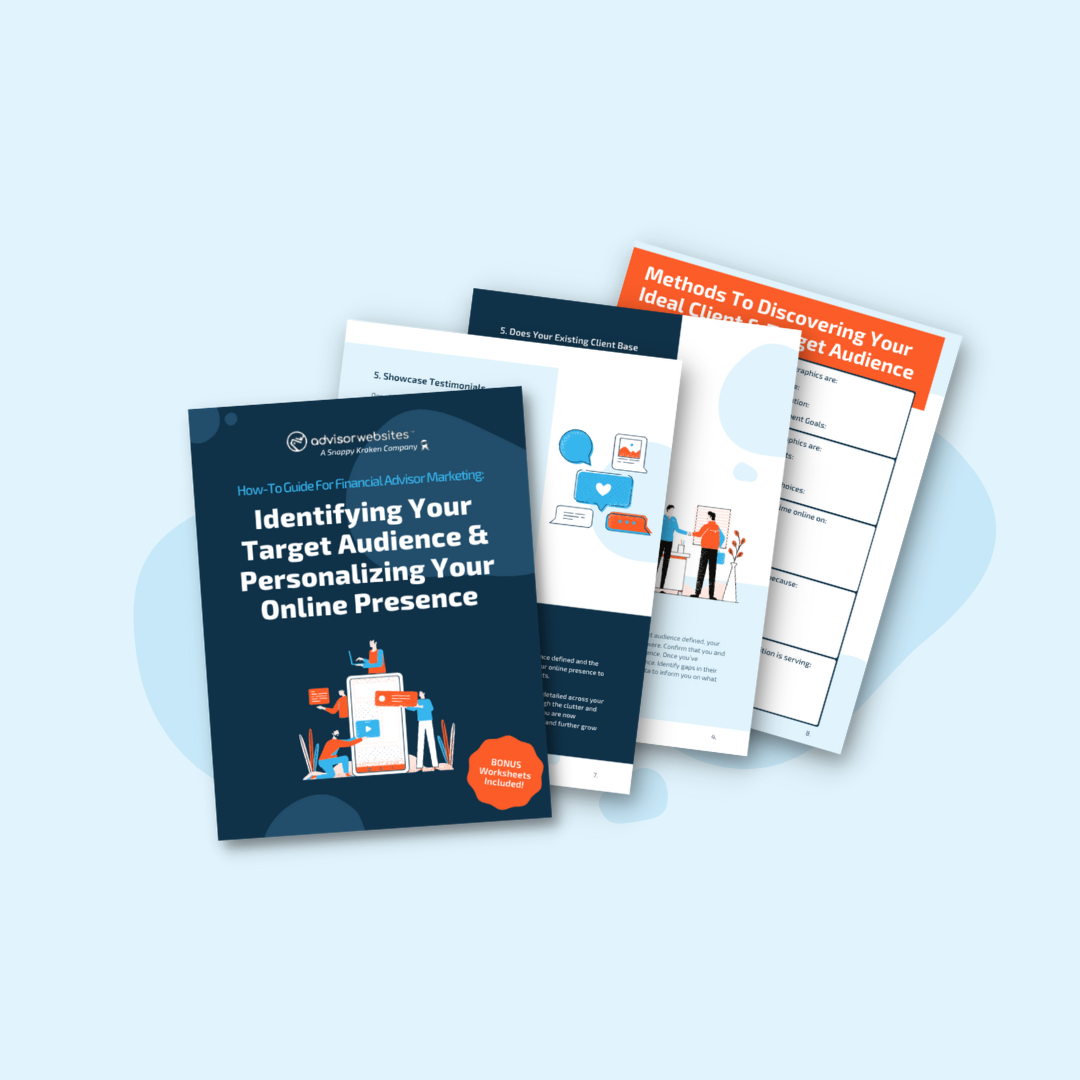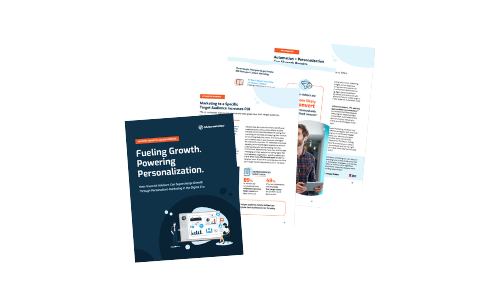It’s a dog-eat-dog digital world out there. With the enormous shift to digital marketing as of late, thousands of financial advisors are working hard to strengthen their online presence and generate more leads online, which brings new challenges to an already competitive landscape.
As consumer attention spans decrease and alternative options increase, it’s more important than ever to communicate to new prospects that you’re the best advisor for their needs.
So how do you cut through the clutter and stand out from the competition?
By tailoring your digital presence to your ideal client, and providing a personalized online experience.
However, if you don’t have your target audience clearly defined, you’re one step behind the competition.
After all, you can’t tailor your content and messaging to the needs and pain points of your ideal client if you don’t know who they are.
It's more necessary than ever to have your target audience defined and your online presence personalized.
According to Getlift, 71% of companies exceed their revenue and lead goals when they have their target audiences clearly defined. Moreover, 63% of consumers say they won’t buy from brands that have poor personalization.
|
This article is part 1 in a 2-part series of identifying your target audience and personalizing your online presence to their needs. To download the full how-to guide plus access the 2 bonus interactive worksheets included, click below. |
Methods To Discovering Your Ideal Client & Target Audience
To define your target audience appropriately, a great first step is to identify the attributes your current clients have in common. There are various methods to collect this information, such as 1:1 interviews with existing clients, customer surveys, connecting with your team, and reviewing the data already stored in your CRM. Here are 6 steps that will help you identify and define your target audience. Let’s get started.
1. What Are The Demographics Of Your Current Clients?
Demographics to consider include:
- Age
- Gender
- Location
- Income
- Occupation
- Investment portfolio size
- Investment goals
By gathering this information and recording it on the worksheet (download the full how-to guide here), you are building a profile for your ideal client. Once you’ve completed the worksheet, you should have a more defined and documented target audience profile that will help guide a more focused and effective marketing strategy. Let’s continue.
2. What Are Their Psychographic Attributes?
Psychographics to consider include:
- Beliefs & Values
- Personality Characteristics
- Desires & Goals
- Pain Points
- Interests
- Lifestyle Choices
Combining demographics and psychographics will bring you one step closer to developing a deeper understanding of your target audience and increasing your chances of making meaningful connections. You’ll be able to personalize your marketing message and tailor your online presence to speak to these attributes, for example, a particular age bracket and their unique needs and pain points - which is key for personalization.
3. Where Do Your Current Customers Spend Their Time Online?
Identifying the channels and platforms that your current clients interact with online can help you understand where you need to be in order to reach new prospects. Where do they get their news, entertainment, and network with others? Where do they turn to for advice?
These channels can include:
|
|
4. Why Did Your Current Clients Choose You?
If you have a clear understanding of why your customers chose you over competitors, then you will recognize which factors were most important to them when choosing a financial advisor. By documenting their pain points, needs, and the issues they face, you can then highlight these features in your marketing message.
Your clients may have chosen you because of:
- Your experience
- Your qualifications
- Your fees
- The services you offer
- Testimonials from other clients
- Your social media following
- Positive word-of-mouth
- Your website
5. Does Your Existing Client Base Reflect Who You Want To Serve In The Future?
At this point, you should have a pretty clear understanding and documentation of who your current clients are. Now is the time to ask yourself if this is the target audience you want to serve in the future before moving on.
Do you want to expand or specialize?
As your existing client base grows and evolves, you will want to continue making the necessary changes to your personalized messaging in order to attract your ideal future clients.
6. Who Is Your Competition Serving?
Keep a pulse on your competition. Now that you have your target audience defined, your competitors may no longer be who you originally thought they were. Confirm that you and your competitors are, in fact, targeting the same audience. Once you’ve determined who your competition is, analyze their online presence. Identify gaps in their marketing, where they may be missing the mark and use this data to inform you on what you can do to stand out online.
Coming Up Next...
Congratulations! You now have the tools you need to identify and document your target audience. In Part 2, you are going to discover how to personalize your online presence to their specific needs. Why is this important? Let’s look at the data.
Personalization reduces customer acquisition costs by as much as 50%, and 95% of companies increased profitability in the year after personalizing their marketing efforts.
Stay tuned for how to do this in Part 2 or download the full how-to guide (with bonus interactive worksheets) here.








